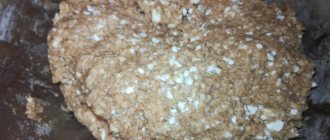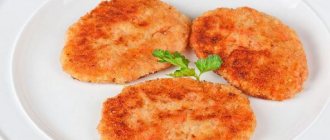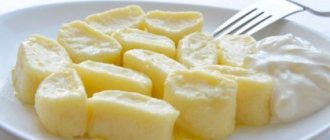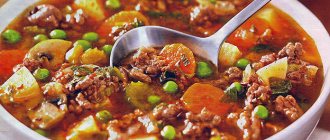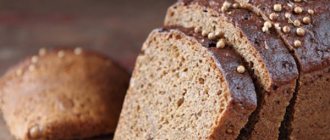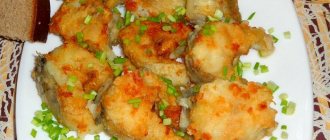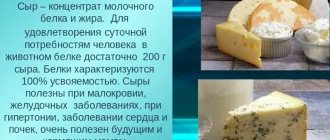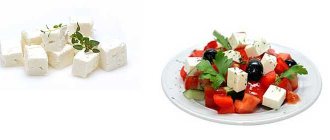Pie is a traditional Russian dish. Pies have been baked in Rus' since ancient times. In his book, traveler Adam Olearius first described what kind of pies our ancestors baked, how exactly they baked and served them. But ancient pies had little in common with modern baked goods. Those who are watching their figure need to know how many calories are in the pie.
Dietary properties:
What calorie content the pies have, what dietary properties they have, all this is of great interest to those who lead a healthy lifestyle and monitor their health and figure. So we will try to answer these questions in the next article.
So here it is:
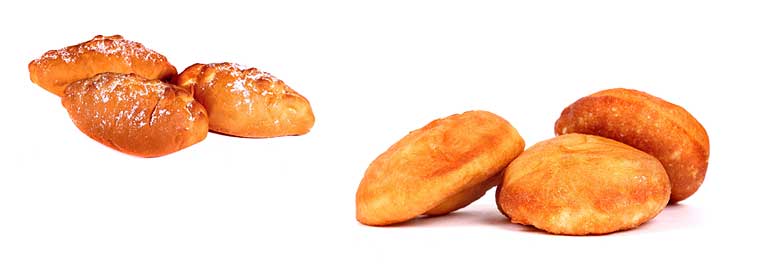
Baking has always taken pride of place on the table. It is no coincidence that many Russian proverbs and sayings are dedicated specifically to pies, and not to any other dishes. Pies have long been considered a festive dish and a symbol of hospitality, which is why it is said that “a hut is not red in its corners, but red in its pies.”
Our mothers and grandmothers always baked cakes, cookies and pies for the holidays, and each family kept its own time-tested recipes. And although the choice of products was not as large as it is now, the baked goods always turned out surprisingly tasty. Today, a variety of confectionery products can be easily bought in any store, but sometimes you really want to remember the taste of a freshly baked bun, familiar from childhood, or surprise your guests with an incredibly beautiful cake made by yourself.
It is generally accepted that preparing homemade confectionery takes a lot of time, and that is why many housewives bake extremely rarely. Meanwhile, buns, pies, bagels, muffins, rolls can be baked in less than an hour, and from quite affordable products.
In order for the pies to be tasty, you need to prepare the dough correctly. There are two ways to prepare yeast dough - straight and sponged.
The sponge method is used to prepare dough mainly for products with a small amount of baked goods (sugar, butter, eggs) and dough of weak consistency - for pancakes, pancakes, fried pies, etc. The sponge method is used to make richer products.
Approximate layout for 1 kg of flour: pressed yeast 10–40 g, salt 12–15 g, water or milk from 400 to 500 g
The amount of yeast used to prepare the dough depends on its quality and the temperature conditions under which the dough ferments. For example, the worse the quality of the yeast and the lower the temperature, the more of it should be added.
When kneading the same type of yeast dough, the liquid norms may change in one direction or another. Thus, the amount of liquid for pies made from yeast dough can vary from 45 to 55% by weight of flour. This is explained by the degree of moisture in the flour: the more moisture the flour contains, the less it absorbs, and vice versa.
In addition, the drier the flour, the higher the yield of finished products. In accordance with this, the flour consumption rates specified in recipes for baked goods, depending on the moisture content of the flour, should be reduced or increased by an average of one percent for each percentage deviation of the flour moisture content from the norm according to the standard.
To obtain a fluffy product and increase baking, you need to take flour containing 30–40% good gluten.
Products prepared with milk rather than water are more tasty and aromatic, and their crust is shiny and has a good color.
Sugar significantly improves the quality of products, but it, like other raw materials, should be added to the dough strictly according to the norm. If the dough is very sweet, then fermentation slows down; In addition, when baking, the products quickly brown and are poorly baked. If the amount of sugar in the dough is insufficient, the product will hardly develop a golden brown crust.
Fats, softened to the consistency of sour cream, are added at the end of kneading the dough or when kneading it, this improves the fermentation of the dough.
Recipes for making diet pies
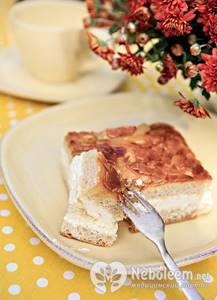
Diet pies recipes include only natural products. So, to prepare a diet apple pie according to the recipe, you need to take 500 ml of low-fat kefir, 500 g of apples, four tablespoons of semolina and oatmeal, one egg, you can add a little vanilla or cinnamon, a little lemon juice and soda for slaking, 200 grams of dried apricots , soaked from the evening.
Grease a pie pan with olive oil, peel the apples and place on the bottom. Sprinkle apple slices with cinnamon. Mix kefir with egg, add cereal and mix. Finely chop the dried apricots and add to the dough. Pour the resulting mixture onto the apples and bake for 30-40 minutes at 180 degrees. Thanks to the natural composition, the calorie content of apple pie will be low.
Both children and adults will really like apple pie with cottage cheese. With a low calorie content, cottage cheese pie is good for the body. To prepare it, you need to take one glass of wholemeal flour or oatmeal, two eggs, four whites, half a glass of milk (0%), half a tablespoon of fructose, a little salt, one teaspoon of soda, slaked with lemon juice. For the filling you will need 200 grams of cottage cheese, two tablespoons of yogurt, one tablespoon of raisins, two apples. All ingredients for the dough must be mixed in a deep bowl. Grease a baking sheet with oil, place the dough and let it rest for five to ten minutes. At this time, chop the apples into thin slices, mix cottage cheese with yogurt and raisins. Place the cottage cheese on the dough, carefully level it, and place apple slices on top. Bake for 2-30 minutes at 180 degrees.
How many calories are in pies?
Here's how much:
Naturally, the calorie content of pies depends on the filling and method of preparation.
Pay attention to this table:
Table of calorie content of pies and nutritional value (BJU) per 100 grams:
| Pies: | Bel, gr. | Fat, gr. | Angle, gr. | Cal, kcal. |
| Fried with onions and eggs | 9.0 | 9.6 | 34.0 | 259 |
| With onions and eggs in the oven | 8.6 | 9.1 | 26.0 | 214 |
| Fried with cabbage | 5.0 | 10.5 | 29.0 | 230 |
| With cabbage in the oven | 4.4 | 7.1 | 33.6 | 214 |
| Fried with potatoes | 6.2 | 10.0 | 17.7 | 244 |
| With potatoes in the oven | 4.4 | 2.5 | 35.0 | 190 |
| Fried with meat | 4.7 | 8.8 | 48.0 | 290 |
| With meat in the oven | 12.2 | 5.7 | 35.5 | 245 |
| Rice and egg | 10.3 | 7.6 | 35.0 | 250 |
| With apple | 5.6 | 4.7 | 54.0 | 286 |
| With cherry | 6.9 | 3.7 | 40.0 | 287 |
| With cottage cheese | 11.0 | 19.7 | 21.3 | 307 |
Calorie content of cabbage pie
According to nutritionists, cabbage pie can be neither fully beneficial nor harmful to your figure. This delicious dish consists of cabbage filling and a flour base. The calorie content of a cabbage pie depends on the number of calories in the ingredients from which it is baked. As a rule, it contains white cabbage (28 kcal), milk (47 kcal), chicken eggs (157 kcal), flour (364 kcal) and baking powder (79 kcal). In general, the calorie content of a cabbage pie usually does not exceed 340 kcal.
The number of calories in a cabbage pie can be significantly reduced if you use low-fat milk and coarse durum wheat flour to prepare it. By the way, this dish contains many useful substances. It contains vitamins A, C, B, K, PP, folic and pantothenic acids, as well as sodium, potassium, iron, phosphorus, magnesium. Cabbage contains a lot of amino acids. But due to its rather high calorie content, cabbage pie is best consumed in limited quantities.
Pies for weight loss:
And further:
How to make good dough?
Before putting the dough, be sure to sift the flour to remove impurities, lumps, and also introduce air - the dough will rise better.
When making a dough or dough, do not pour flour into the liquid, but, on the contrary, dilute the flour with milk or water, stirring thoroughly all the time so that there are no lumps.
Do not let the dough rest - the pies will taste sour. It is enough to stand for 3 hours, but be sure to stay warm.
To make the rice for the filling white and crumbly, add a little vinegar to the water where it is cooked 5 minutes before it is cooked. Drain in a colander and rinse well with cold water.
You almost always need to add hard-boiled eggs to the pie filling. Boil them in salted water so that they do not leak out; if the shell is cracked, at a vigorous boil, then the protein will be hard.
Calories Pie. Chemical composition and nutritional value.
Nutritional value and chemical composition of "Pie".
The table shows the nutritional content (calories, proteins, fats, carbohydrates, vitamins and minerals) per edible portion.
| Nutrient | Quantity | Norm** | % of the norm in 100 g | % of the norm in 100 kcal | 100% normal |
| Calorie content | 252.4 kcal | 1684 kcal | 15% | 5.9% | 667 g |
| Squirrels | 12.1 g | 76 g | 15.9% | 6.3% | 628 g |
| Fats | 6.6 g | 56 g | 11.8% | 4.7% | 848 g |
| Carbohydrates | 38.7 g | 219 g | 17.7% | 7% | 566 g |
| Organic acids | 50 g | ~ | |||
| Alimentary fiber | 2 g | 20 g | 10% | 4% | 1000 g |
| Water | 83.1 g | 2273 g | 3.7% | 1.5% | 2735 g |
| Ash | 12.5 g | ~ | |||
| Vitamins | |||||
| Vitamin A, RE | 40 mcg | 900 mcg | 4.4% | 1.7% | 2250 g |
| Retinol | 0.04 mg | ~ | |||
| Vitamin B1, thiamine | 0.3 mg | 1.5 mg | 20% | 7.9% | 500 g |
| Vitamin B2, riboflavin | 0.3 mg | 1.8 mg | 16.7% | 6.6% | 600 g |
| Vitamin B4, choline | 28.9 mg | 500 mg | 5.8% | 2.3% | 1730 g |
| Vitamin B5, pantothenic | 0.3 mg | 5 mg | 6% | 2.4% | 1667 g |
| Vitamin B6, pyridoxine | 0.2 mg | 2 mg | 10% | 4% | 1000 g |
| Vitamin B9, folates | 27.8 mcg | 400 mcg | 7% | 2.8% | 1439 g |
| Vitamin B12, cobalamin | 0.04 mcg | 3 mcg | 1.3% | 0.5% | 7500 g |
| Vitamin C, ascorbic acid | 2.9 mg | 90 mg | 3.2% | 1.3% | 3103 g |
| Vitamin E, alpha tocopherol, TE | 3 mg | 15 mg | 20% | 7.9% | 500 g |
| Vitamin H, biotin | 1.6 mcg | 50 mcg | 3.2% | 1.3% | 3125 g |
| Vitamin RR, NE | 3.4086 mg | 20 mg | 17% | 6.7% | 587 g |
| Niacin | 1.4 mg | ~ | |||
| Macronutrients | |||||
| Potassium, K | 243.3 mg | 2500 mg | 9.7% | 3.8% | 1028 g |
| Calcium, Ca | 33.6 mg | 1000 mg | 3.4% | 1.3% | 2976 g |
| Silicon, Si | 2.1 mg | 30 mg | 7% | 2.8% | 1429 g |
| Magnesium, Mg | 22.5 mg | 400 mg | 5.6% | 2.2% | 1778 |
| Sodium, Na | 46.2 mg | 1300 mg | 3.6% | 1.4% | 2814 g |
| Sera, S | 109.8 mg | 1000 mg | 11% | 4.4% | 911 g |
| Phosphorus, P | 136.4 mg | 800 mg | 17.1% | 6.8% | 587 g |
| Chlorine, Cl | 896.1 mg | 2300 mg | 39% | 15.5% | 257 g |
| Microelements | |||||
| Aluminium, Al | 657.2 mcg | ~ | |||
| Bor, B | 39.6 mcg | ~ | |||
| Vanadium, V | 64.2 mcg | ~ | |||
| Iron, Fe | 1.1 mg | 18 mg | 6.1% | 2.4% | 1636 g |
| Yod, I | 50.2 mcg | 150 mcg | 33.5% | 13.3% | 299 g |
| Cobalt, Co | 8 mcg | 10 mcg | 80% | 31.7% | 125 g |
| Lithium, Li | 9.3 mcg | ~ | |||
| Manganese, Mn | 0.4284 mg | 2 mg | 21.4% | 8.5% | 467 g |
| Copper, Cu | 124.4 mcg | 1000 mcg | 12.4% | 4.9% | 804 g |
| Molybdenum, Mo | 10.5 mcg | 70 mcg | 15% | 5.9% | 667 g |
| Nickel, Ni | 4.2 mcg | ~ | |||
| Tin, Sn | 4.2 mcg | ~ | |||
| Rubidium, Rb | 76.3 mcg | ~ | |||
| Selenium, Se | 3.1 mcg | 55 mcg | 5.6% | 2.2% | 1774 g |
| Titanium, Ti | 5.7 mcg | ~ | |||
| Fluorine, F | 229.7 mcg | 4000 mcg | 5.7% | 2.3% | 1741 g |
| Chromium, Cr | 19.3 mcg | 50 mcg | 38.6% | 15.3% | 259 g |
| Zinc, Zn | 0.7921 mg | 12 mg | 6.6% | 2.6% | 1515 g |
| Digestible carbohydrates | |||||
| Starch and dextrins | 32.5 g | ~ | |||
| Mono- and disaccharides (sugars) | 1.4 g | max 100 g | |||
| Sterols (sterols) | |||||
| Cholesterol | 36.5 mg | max 300 mg |
The energy value of the Pie is 252.4 kcal.
Primary Source: Created in the application by the user. Read more.
** This table shows the average levels of vitamins and minerals for an adult. If you want to know the norms taking into account your gender, age and other factors, then use the “My Healthy Diet” application.
The dependence of the calorie content of pies on the filling
And now you can turn your attention to the fillings, which determine the second half of the calorie content of the pies. With an egg, with potatoes, with cabbage, with cottage cheese, with cherries - only your imagination can serve as a limitation here. And since it is not possible to examine each one in detail, it is worth dividing them simply into several categories, where it will be possible to set certain limits for the calorie content of the pies.
- Meat pies undoubtedly have the greatest “weight”, since minced meat, regardless of whether it is pork, beef or chicken, has a high calorie content. From 221 kcal and 293 kcal for pork and beef to 194 kcal and 143 kcal for turkey and chicken. In addition to meat, these pies also contain onions, whose calorie content is 41 kcal. The “weight” of the finished product ranges from 300 kcal to 210 kcal. For example, the calorie content for fried pies with meat made from yeast dough will be 293 kcal per hundred grams, and the calorie content for baked pies with the same filling and base is already 241 kcal per hundred grams. And the calorie content of baked chicken pies made from puff pastry will be even less - 233 kcal.
- Pies with vegetables, as well as herbs and onions, are, of course, lighter than meat and fish ones. Their calorie content varies from 255 kcal to 148 kcal per hundred grams. Among vegetables or herbs, it is difficult to distinguish the heaviest and lightest representatives - most of them weigh about 19-45 kcal and, in addition, have a lot of dietary properties. This is especially true for cabbage, and, in particular, stewed cabbage. The most “significant” additive can be considered boiled eggs, whose calorie content reaches 159 kcal. As a result, the calorie content of the variation with cabbage for fried pies is 253 kcal, while for baked pies the calorie content drops to 168 kcal. The calorie content of pies with egg and onion in a frying pan will show 234 kcal, and the calorie content of pies with egg and onion in the oven is only 217 kcal.
- Potato pies deserve special mention, since they have no less variations than vegetable or meat pies. Potatoes, in principle, stand out from other vegetables due to their calorie content of 77 kcal, starch content, and also because they contain carbohydrates classified as fast. Potatoes are also quite difficult for the body to digest, which should be taken into account by people with a weak gastric tract. Potato pies can reach either 287 kcal or 171 kcal. Often the filling is not only mashed potatoes, but also herbs, sausage, and mushrooms, which also affects the final “weight” of the product. Let’s say the calorie content of a pie with potatoes and sausage in a frying pan is 276 kcal, and the calorie content of a pie with potatoes and onions in the oven is only 173 kcal.
- And those with a sweet tooth are undoubtedly devoted to pies with fruit or cottage cheese, which have a delicate taste and aroma. For such pies, the calorie content jumps from 158 kcal to 233 kcal per hundred grams. They contain a considerable proportion of vitamin C, fructose and fiber, which determines their calorie content. And if the filling is cottage cheese, then there is a decent amount of protein. The calorie content of a cottage cheese pie will be 209 kcal for the oven and 217 kcal for the frying pan. And the calorie content of an apple pie will be 177 kcal and 205 kcal, respectively.

